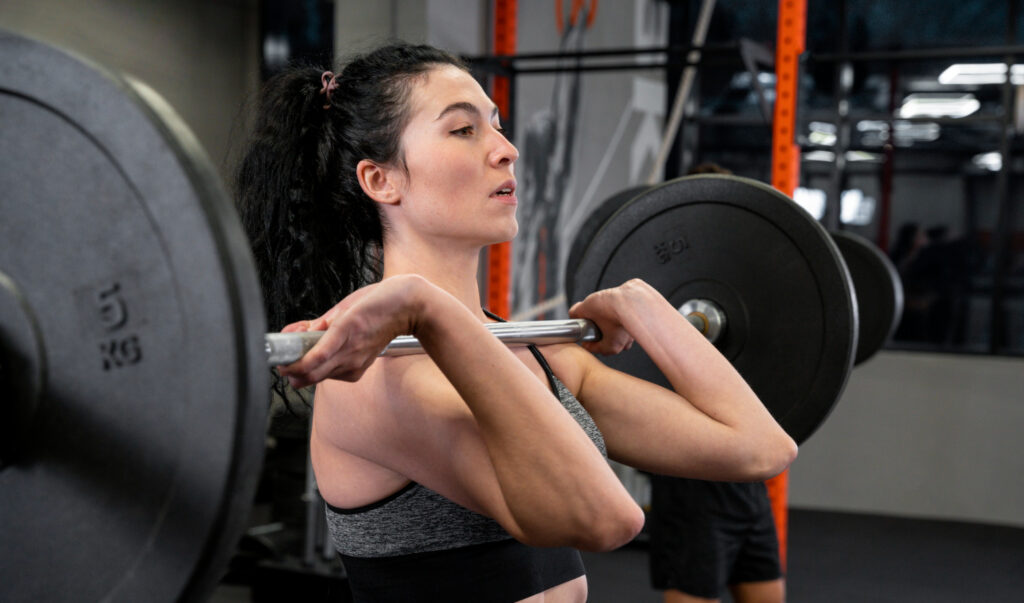
In this article
When you aim to lose fat and gain muscle simultaneously, you’re engaging in a process known as body recomposition. This is a challenging endeavor because losing fat and gaining muscle are physiologically contradictory processes. Your body might resist doing both at the same time, especially if your primary goal is weight loss. Therefore, it’s essential to develop a detailed plan that considers both objectives. Consulting a healthcare provider, dietitian, and exercise physiologist can be beneficial. These professionals can help you formulate a plan focused on maintaining and building lean muscle while adhering to a nutritious diet that supports weight loss and muscle gain.
How to Gain Muscle
To gain muscle mass, it’s crucial to pay attention to your protein intake and the types of exercises you perform. Research shows that resistance training not only increases muscle mass but also decreases body fat and boosts resting metabolic rate. If you’re new to resistance training, start slowly to build a foundation with good form and joint stability. As you progress, focus on endurance and strength by working out at moderate intensity with challenging weights.
Rest is also crucial. Muscles need time to recover, so avoid resistance training every day. Incorporate other exercises like cycling, walking, running, yoga, or HIIT on off days. Proper sleep and stress management are equally important. Adequate sleep keeps anabolic hormone levels elevated, aiding muscle recovery and growth, while chronic stress can elevate catabolic hormones, hindering muscle growth.
Benefits of Muscle Gain
Muscle gain is vital for overall health and well-being. It enhances your ability to perform daily activities, impacts mobility, and can increase longevity. Muscle loss, especially in older adults, can reduce quality of life and increase the risk of falls. Benefits of muscle gain include:
- Improved strength and endurance
- Reduced risk of injuries and falls
- Better blood sugar and cholesterol levels
- Enhanced functional abilities and coordination
- Improved heart health and bone density
- Reduced body fat
How to Safely Lose Fat
Losing body fat safely involves being in a calorie deficit while consuming nutritious foods to maintain energy levels. Many people underestimate their food intake, making fat loss challenging. Focus on your protein, carbohydrate, and fat intake. Typically, body recomposition requires reduced carbohydrate and fat intake and increased protein intake. Research suggests that higher protein intake during weight loss helps maintain lean muscle mass. Resistance training further supports fat loss while retaining muscle.
The International Society of Sports Nutrition (ISSN) recommends at least 3 grams of protein per kilogram (2 pounds) of body weight to promote fat loss and muscle gain. Also, consume fruits, vegetables, whole grains, nuts, and healthy fats like olive oil and avocado. Include fatty fish like salmon, herring, sardines, and trout for additional protein and healthy fats. The CDC advises losing no more than one to two pounds per week for sustainable weight loss that supports muscle maintenance.
Benefits of Fat Loss
Reducing body fat improves overall health and reduces the risk of chronic diseases. Losing as little as 5% to 10% of your body weight can significantly impact health. Benefits of fat loss include:
- Improved blood sugar and cholesterol levels
- Lower blood pressure
- Regular menstrual cycles
- Enhanced joint mobility
- Reduced risk of depression and sleep apnea
- Improved sexual function and heart health
- Reduced risk of stroke
Can You Gain Muscle and Lose Fat at the Same Time?
Yes, it’s possible to gain muscle and lose fat simultaneously, although it’s challenging. Sometimes, weight loss can lead to muscle loss, known as weight-loss-induced muscle loss, which can reduce muscle function and strength. To prevent this, accompany your weight loss efforts with consistent resistance training and balanced nutrition. Consistency in exercise and nutrition is key to achieving results.
For example, a study found that participants who followed a cardio and resistance training program for 12 weeks lost an average of 10% body fat while increasing muscle mass by almost 9%. Another study showed that older women who participated in a 12-week swimming program experienced fat loss and increased physical strength. These studies highlight the importance of consistent exercise and a nutritional plan that promotes weight loss and muscle gain.
Nutrition for Muscle Gain and Fat Loss
Protein is crucial for muscle gain and fat loss. Adequate protein intake helps build new muscle and prevents the body from using existing muscle as fuel during workouts. Protein also supports fat loss by promoting satiety. Aim for a minimum of 35% of your daily calories from protein to support weight loss. The ISSN recommends at least 3 grams of protein per kilogram of body weight for muscle gain and fat loss.
Calculate your protein needs by dividing your body weight (in pounds) by 2.2, then multiplying by three. This gives you your daily protein goal in grams. Quality protein sources include:
- Poultry (chicken breast, turkey)
- Lean meats (sirloin, top round, 90% lean ground beef)
- Fish and shellfish (salmon, tuna)
- Eggs and egg whites
- Nuts and seeds (walnuts, almonds)
- Legumes (chickpeas, lentils)
- Dairy (cottage cheese, Greek yogurt)
- Soy products (tofu, tempeh)
- Protein powders (whey and plant-based)
Your optimal protein intake may vary based on age, calorie intake, and body weight.
Exercises for Muscle Gain and Fat Loss
Resistance training should be central to your workout routine. Balance strength training with other exercises like walking, running, cycling, swimming, or yoga on non-strength training days. For resistance training, you can use various approaches, such as dose-response training, which involves performing a specific number of sets and repetitions to induce muscle change. Research suggests doing five sets of 10 repetitions per exercise for optimal body composition changes.
You can choose between multi-joint exercises (bench press, deadlift, squat) and single-joint exercises (bicep curls, tricep extensions). Both types effectively reduce body fat and increase muscle mass. Incorporate a mix of exercises, such as:
- Pushups (chest/triceps)
- Planks (core)
- Crunches (core)
- Bent-over row (back/biceps)
- Bicep curls (biceps)
- Tricep extensions (triceps)
- Goblet squat (legs)
- Lunges (legs)
- Floor bridge (glutes/hamstrings)
- Deadlift (glutes/hamstrings)
- Lateral raise (shoulders)
Perform these exercises in circuits, aiming for 10 repetitions each with short breaks in between. Start with three sets and gradually increase to five sets with less rest.
How to Track Your Progress
Instead of focusing solely on the scale, track your body’s circumference measurements, especially around the waist and stomach. More formal methods like DEXA scans, Bod Pod, and hydrostatic weighing can provide accurate body composition measurements but can be expensive and are not necessary.
Use apps to track your protein intake, water consumption, and exercise consistency. Keeping a journal can help identify what works and where adjustments are needed.
When to See a Healthcare Provider
Before starting a body recomposition plan, consult a healthcare provider for advice and direction. They can assess your weight loss goals, identify nutritional deficiencies, and ensure that resistance training is safe for you.
A registered dietitian can help create a meal plan, suggest foods, and determine your daily calorie and macronutrient needs. A personal trainer can assist with developing a resistance training program, advising on rest days, and helping you identify appropriate weights or exercises.
This approach to body recomposition enhances readability, corrects errors, and adds valuable information while maintaining the original essence. Each paragraph is carefully crafted to be thorough and engaging, providing a comprehensive guide to losing fat and gaining muscle
A Quick Review
Achieving body recomposition, where you simultaneously gain muscle and lose fat, requires a detailed plan. Focus on resistance training, balanced nutrition with increased protein intake, and adequate rest. Consistency in exercise and nutrition, along with professional guidance, can lead to successful results
FAQS
Can you gain muscle and lose fat at the same time?
Yes, with a well-structured plan that includes resistance training, proper nutrition, and adequate rest, it is possible to gain muscle and lose fat simultaneously.
How much protein should I consume for muscle gain and fat loss?
Aim for at least 3 grams of protein per kilogram of body weight to support muscle gain and fat loss
What types of exercises are best for body recomposition?
Resistance training should be central to your workout routine, supplemented by cardio, cycling, running, swimming, or yoga.
What foods should I eat to support muscle gain and fat loss?
Focus on high-protein foods such as poultry, lean meats, fish, eggs, nuts, legumes, dairy, soy products, and protein powders. Include fruits, vegetables, whole grains, and healthy fats.
How can I track my progress effectively?
Track body circumference measurements, use apps for documenting protein and calorie intake, and maintain a journal of your exercise habits.












